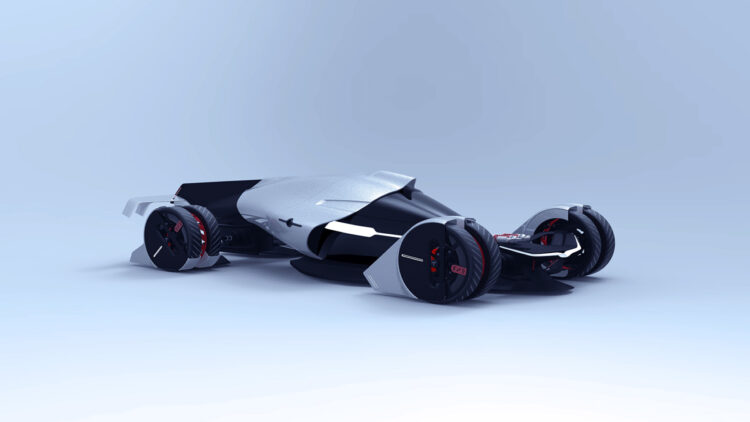Tesla is constantly searching for ways to develop and apply sustainable strategies to their products. When it comes to cars, we’ve already seen the automotive company make significant strides in electric and hydrogen vehicle technology. Now, Tesla has introduced a new type of vehicle with a non-fuel engine that utilizes one of the most underrated renewable energy sources out there: wind.
Introducing the Tesla T1: A lean, mean wind-powered machine
At its core, the Tesla T1 is a groundbreaking concept. Developed by five students from the Institute of European Design Barcelona in Spain for the 2017 Michelin Design Challenge, the team aimed to create a competitor for the iconic 24 Hours of Le Mans car race. What sets the T1 apart from other vehicles, though, is its use of wind energy to power its engine and to enhance overall performance.
Incorporating an eolic system, all four of its freestanding Michelin tires are equipped with turbines that are 3D-printed from aerogel, one of the world’s most lightweight materials. These turbines are enclosed between strong magnesium wheels and graphene tires, directing air through ducts to a fifth larger turbine located at the back of the vehicle. This enables the T1 to run on wind-generated energy while also increasing its power and speed.
Additionally, the T1 comes with other advanced features: programmable polyisoprene bands to drain water; an engine modulus to provide traction; a Dynamic Axis System that boosts the vehicle’s agility and allows it to navigate raceway curves more easily; and a 70-kilowatt battery system that captures and stores the energy generated by the turbines, enabling one to start the car before the turbines are even activated.
What its specs say and what it means for the T1’s overall racing performance
According to its design specifications, the Tesla T1 weighs a little over 1,980 pounds. That’s incredibly lightweight, by most standards. But, thanks to its turbines, its engine power is nothing to scoff at.
The vehicle delivers a combined output of 1,000 kilowatts and generates 1,770
pound-feet of torque. Altogether, it equates to an estimated top speed of 255 miles an hour.
To effectively harness this power, it’s important that the tires on both the front and rear axles can turn independently. That way, the wheelbase shortens, ensuring the vehicle’s agility.
The team has high hopes about the T1’s eco-friendly performance and viability
Miguel Angel Bahri, one of the members of the design team, regards their creation as the next big contender in Le Mans, while also providing a sustainable alternative to racing cars that use traditional engines powered by fossil fuels.
“We are proud to announce the T1 as a reflection of our vision towards what could be considered the ‘Future of Le Mans’: developing new Michelin technologies in order to give further solutions, to improve future energy efficiency, and [to achieve] high levels of performance,” Bahri said.
The team aims to introduce the car at the 2030 edition of Le Mans, where they hope to demonstrate its viability— even better, to win the race and snag the championship!
Undoubtedly, the Tesla T1 model is set to change the landscape of motorsports for the better. Although it’s some years away from making its debut, the design team’s efforts to create a sustainable engine by leveraging the power of wind cannot go unnoticed. What’s more, the vehicle’s unique design and features not only make it a candidate for a successful race car but also set the stage for similar innovations across the automotive industry.
Indeed, the winds of change are upon us, and it’s ushering in a new era of sustainable engineering.

